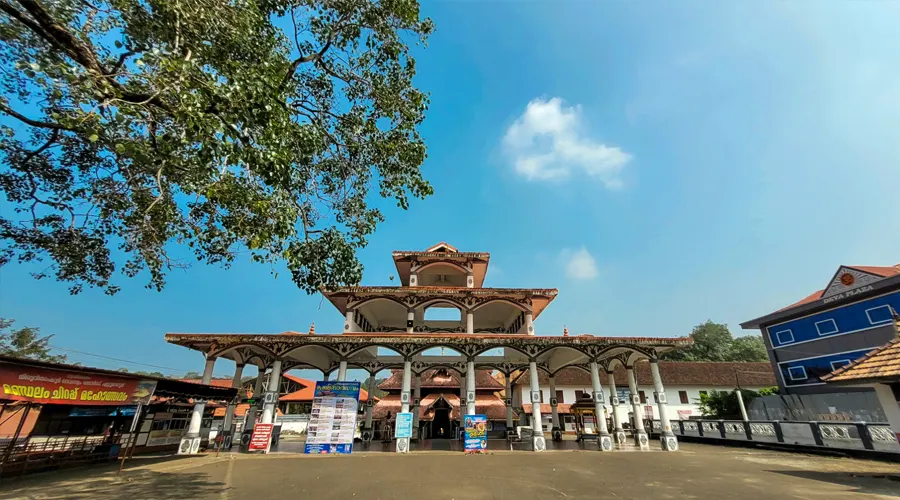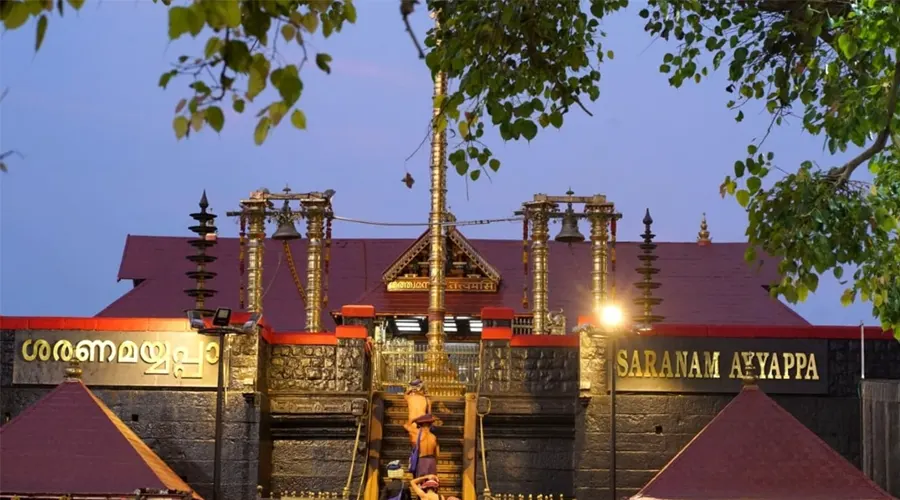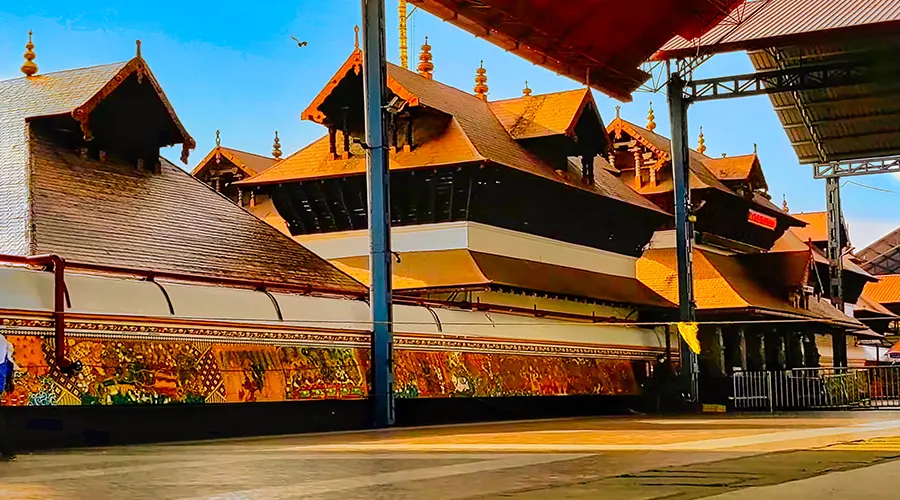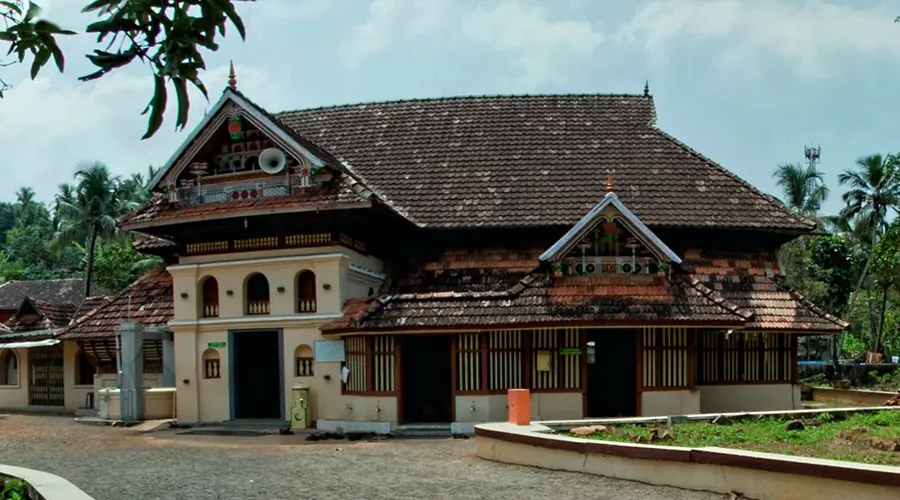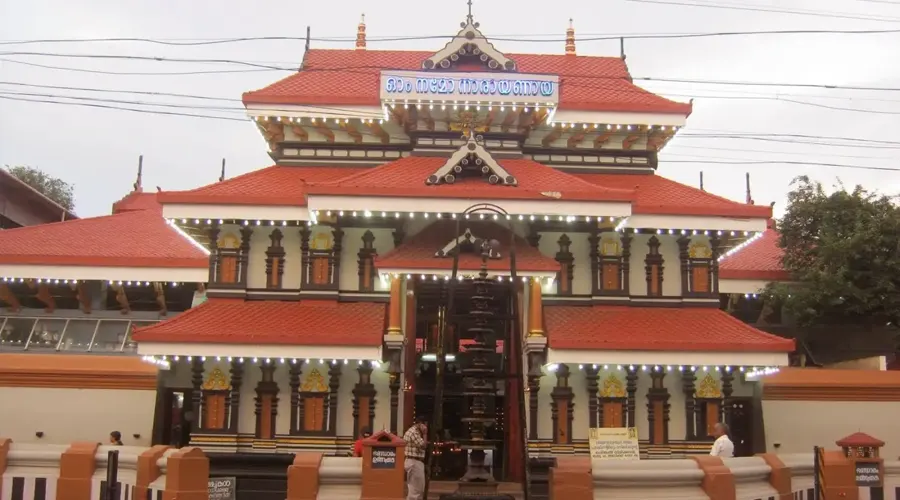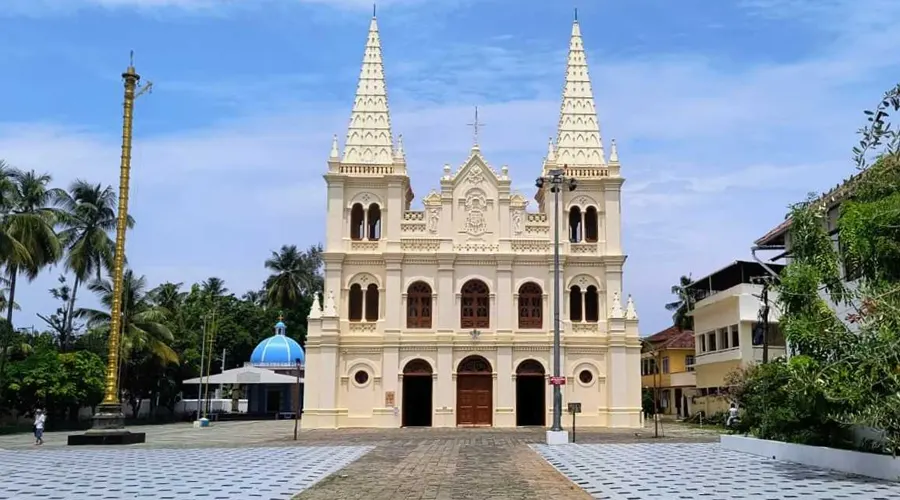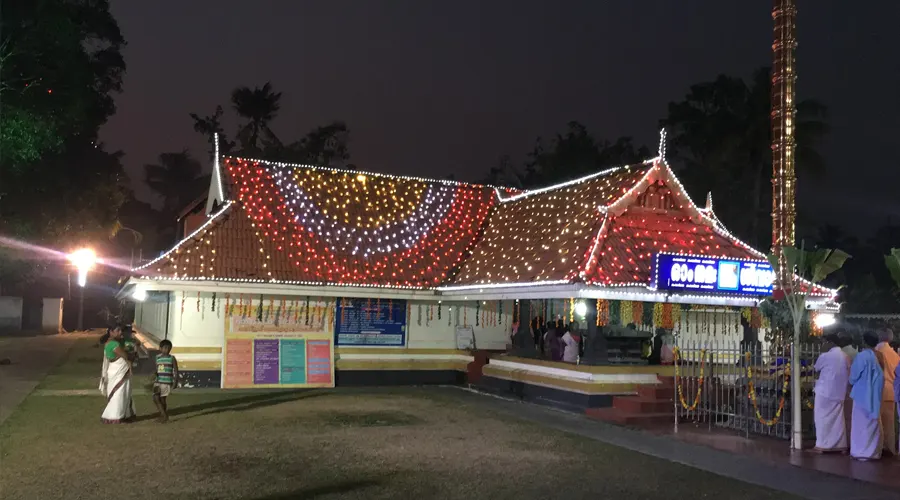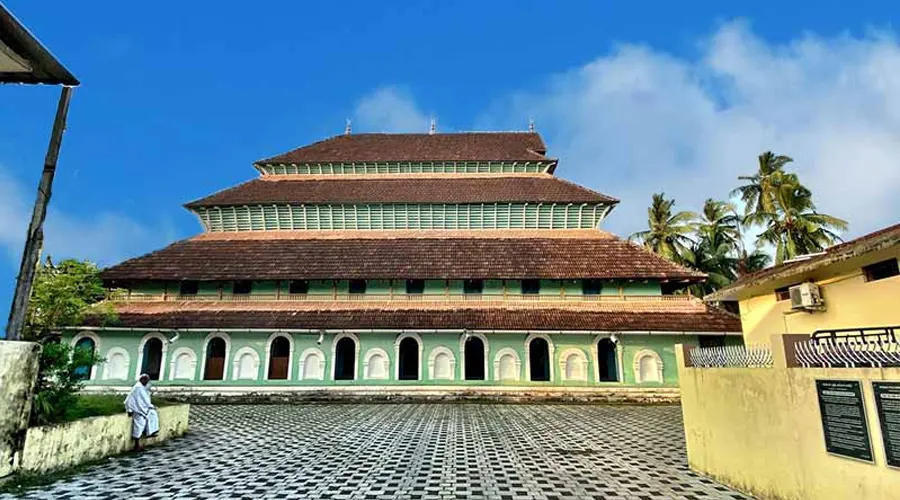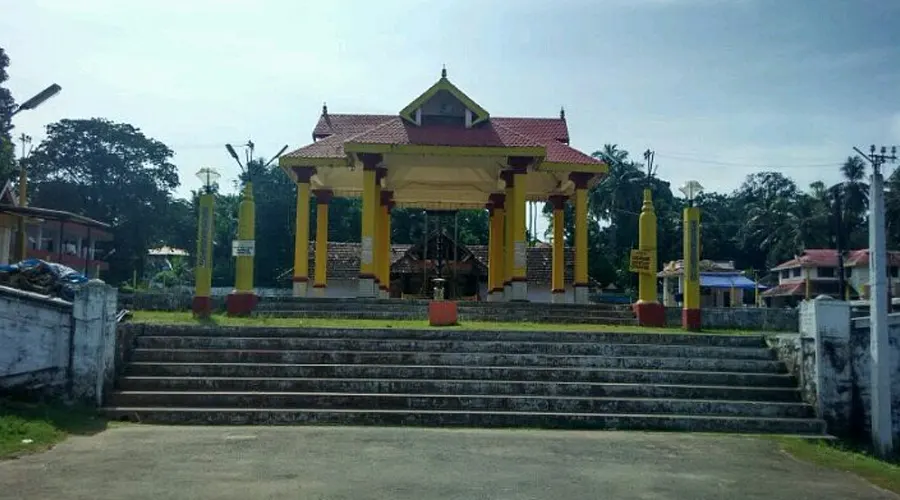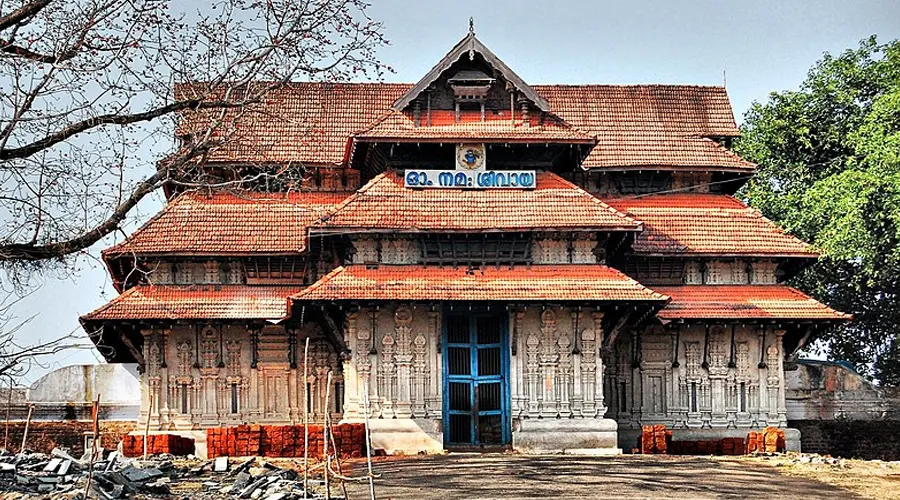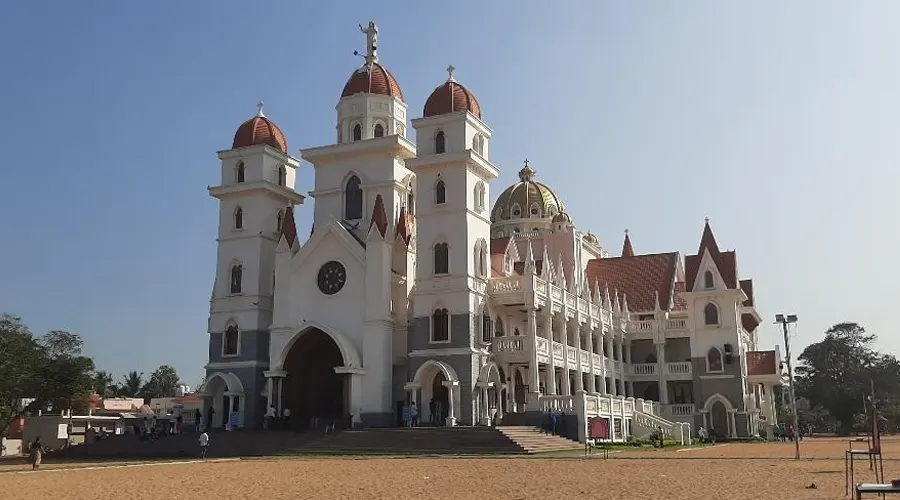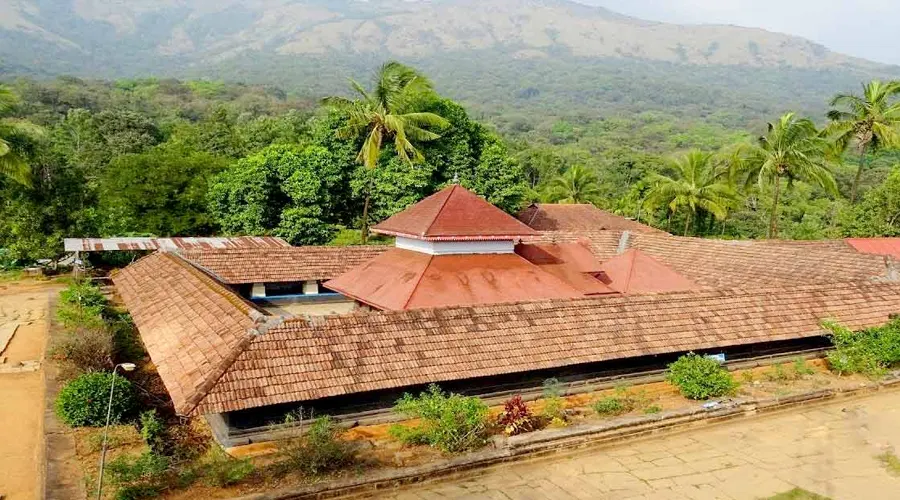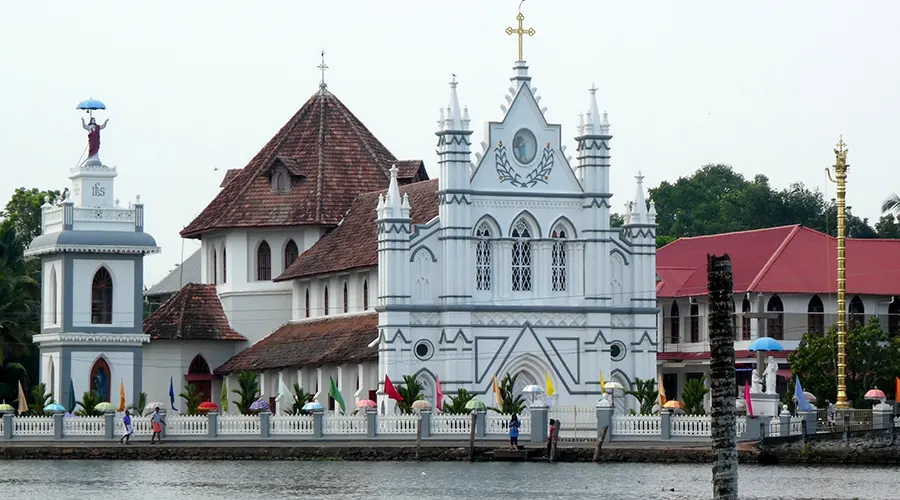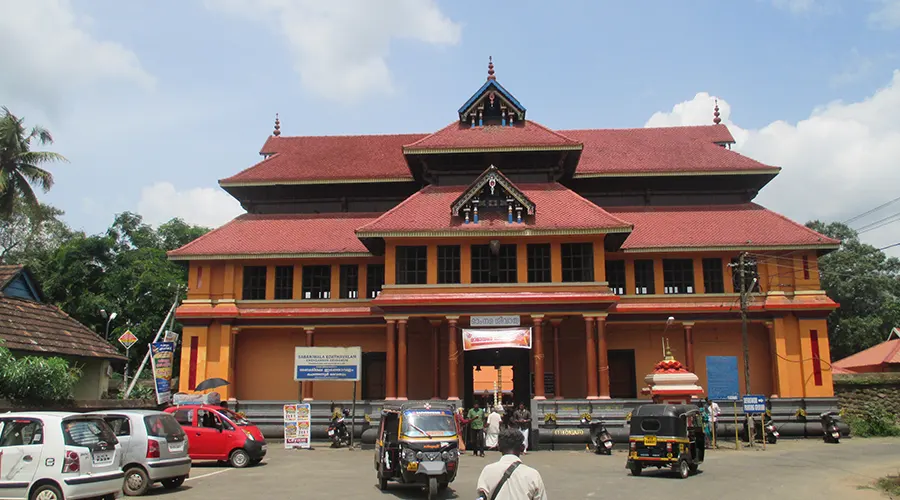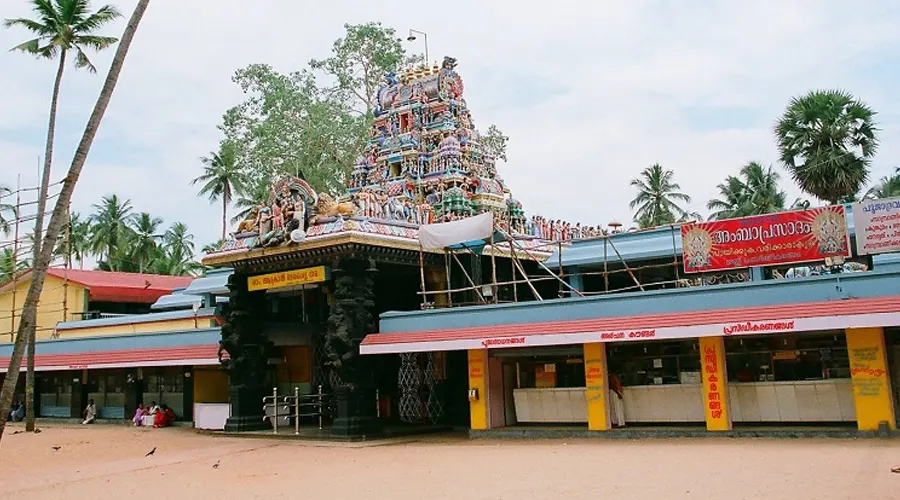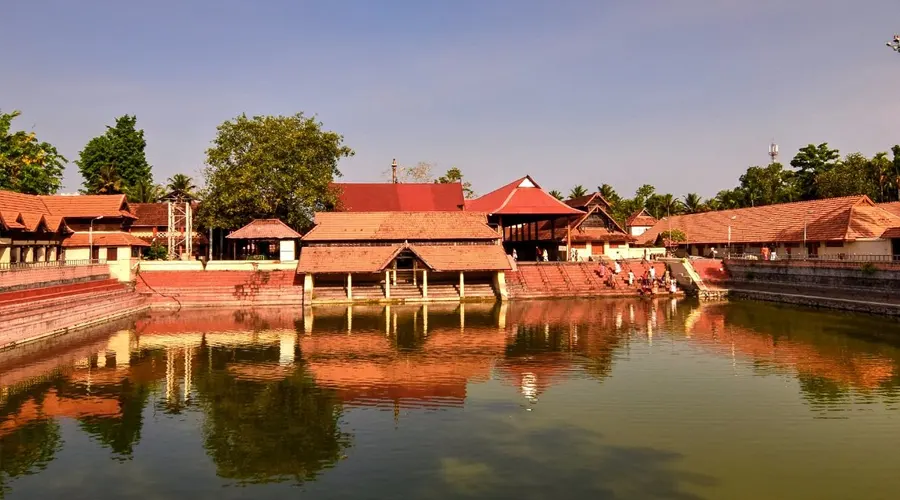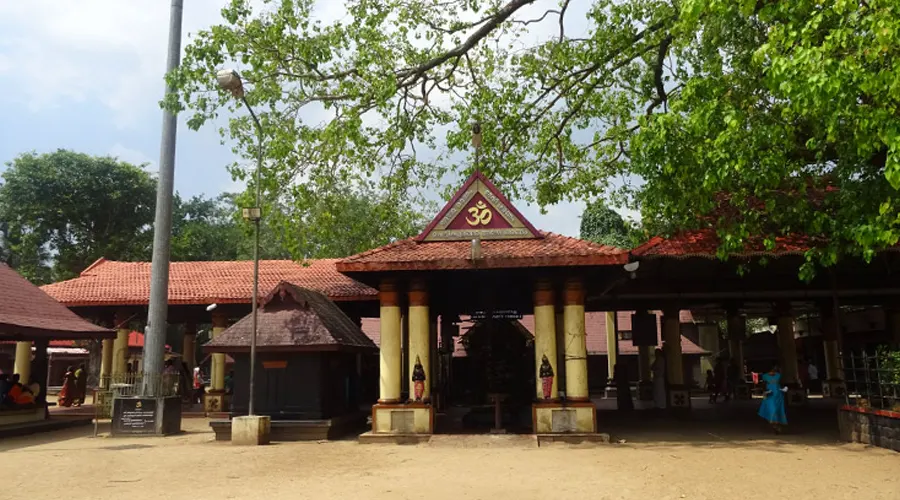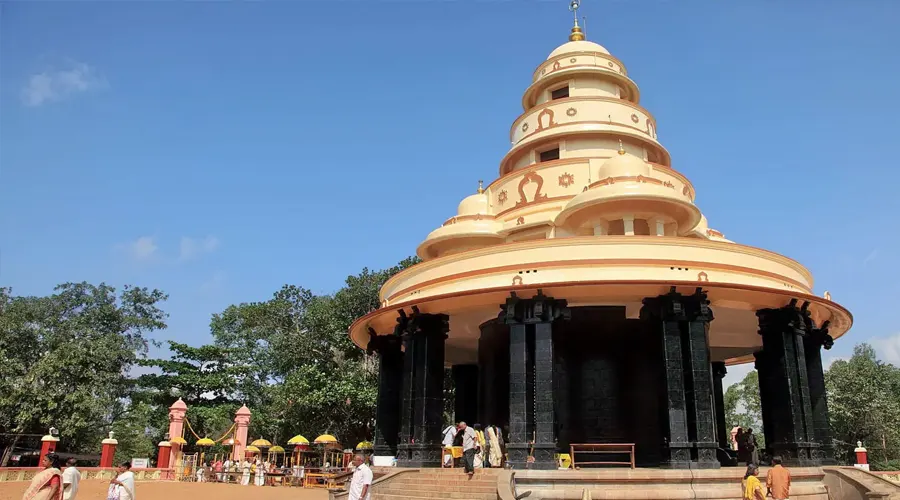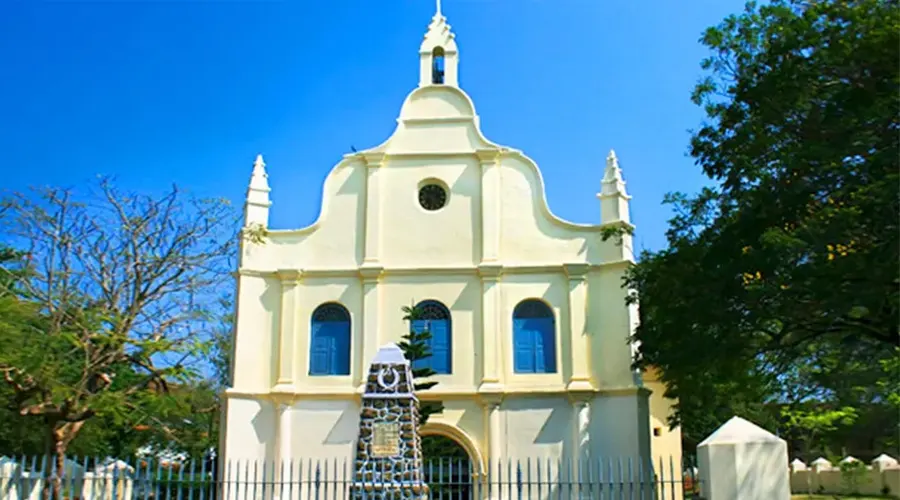Ettumanoor Mahadeva Temple
Located about 10 km from Kottayam in Kumarakom, Ettumanoor Mahadeva Temple is a revered holy place for Hindus. Considered to be the oldest temple in the state of Kerala, the temple is believed to have been a common site of worship by the Pandavas and Sage Vyasa in the ancient days.
Dedicated to Lord Shiva, the shrine is popular for its spectacular murals, beautiful frescos, and excellent wood carvings made in the 16th century, which are borrowed from the classic epics of Ramayana, Mahabharata, and Puranas. The age-old lamp at the temple entrance is fed with oil by devotees every day; it was believed to have been lighted 450 years ago and has been burning ever since.
Renovated in 1542 AD (717 ME), the shrine is popular for its magnificent gopuram (monumental gatehouse tower), roofs covered in copper plates, a golden flagstaff, and outstanding wall paintings. The temple premises consist of a sanctum sanctorum, the chief idol of Lord Shiva, and smaller shrines dedicated to Lord Ganapathi and Lord Shasta.
One of the wealthiest Devaswoms in Kerala, this temple is thronged by tourists and pilgrims all through the year. However, it comes to life during the grand festival of Arattu celebrated in February - March.
History of Ettumanoor Mahadeva Temple
The temple has a lot of legacies behind its origin. The most prominent legend goes to say that Khara was an Asura who got three Shivalingas from Lord Shiva himself. He set off with all three shivalingas to Kerala- held one by his teeth and the other two in his two hands. After reaching Kerala, the one in his teeth was consecrated at Kaduthuruthi, the one in his right hand at Vaikona, and the one in his left hand at Ettumanoor.
Immediately after that, after sanctifying all three shivalingas, the Asura changed into a deer and started worshipping the gods at the same spot. After seeing this devotion, the God in Ettumanoor lifted the deer and held him in that spot as a mark of appreciation. Since then the place came of being called Udhruthaina Puram or Ettumanoor meaning the place where the deer was lifted.
Architecture of Ettumanoor Mahadeva Temple
Ettumanoor Mahadeva Temple boasts magnificent architecture and draws tourists in hordes to witness the marvel. Built-in the ancient times, the temple was renovated in 1542 AD and is currently one of the richest temples in the state of Kerala. Beautiful Dravidian mural paintings adorn the interior and exterior walls of the temple; the fresco of Pradosha Nritham (Dance of Shiva) is the most popular one displayed on the premises.
The inner sanctum houses the golden flagstaff, the top of which had the idol of a bull surrounded by tiny tinker bells and leaves of a banyan tree in metal. Boasting 14 tops, the roofs are covered in elegant copper plates. And the deities of Bhagavati, Sastha, Ganapathy, and Yakshi are also installed here. As per common belief, the great philosopher Adi Shankaracharya wrote the famous Soundarya Lahari while staying here.
Festivals and Rituals at Ettumanoor Mahadeva Temple
Arattu Festival is the most popular festival of the temple celebrated with a lot of zeal, on a grand scale on the Thiruvathira day in February–March every year. The annual festival lasts for 10 days and has major festivities and a maximum crowd on the 8th and 10th days because of the display of elephants.
Seven and a half in number, the elephants are exhibited in the complex they are made of pure gold, weigh close to 13 kilograms, and are colloquially known as Ezharaponnana. Ezhara Ponnana darshan is the most important time of the festival when the elephants are displayed in the Asthana Mandapam at midnight for darshan by the devotees. These sculptures were donated to the temple by a Travancore Maharaja besides other valuable possessions.
The most important ritual practiced at the temple is Thulabharam when devotees make offerings to the gods in return for the favours received by them from the almighty. The child or the person for whom the prayers were sought, is weighed against the offerings which range from fruits to gold.
Ezharaponnana at Ettumanoor Mahadeva Temple
Ezhara Ponnana refers to the seven-and-a-half statuettes of the golden elephants safe vaulted in the temple premises. The eight statues are taken out annually during the Arattu festival for display. Ezhara meaning ‘seven and a half’ and Ponnana meaning ‘golden elephants’ have an interesting myth attached to them. One legend goes to say that it was presented to the temple by the founder of the Travancore kingdom Anizham Thirunal Marthanda Varma.
Another story suggests that while Marthanda Varma promised to make the offerings, the elephants were donated during the reign of his successor Maharaja Karthika Thirunal. The reasons for the donations are also plenty. Some myths say that the elephants were given as compensation for the damages suffered by the temple during the annexation of Thekkumcore by Travancore.
Some others say that the elephants were given when the army of Tipu Sultan was at the gates of Travancore to plunder it. Made in jackfruit wood, the elephants are covered in 13 kg of gold plates.
Dress Code at Ettumanoor Mahadeva Temple
The temple follows a strict dress code. Both men and women are expected to dress modestly preferably in traditional Indian clothes. Men are made to take off their upper garments including their shirts and vests. Women should ideally be wearing traditional sarees or North Indian suits. In any case, their shoulders, arms, and legs should be covered.

